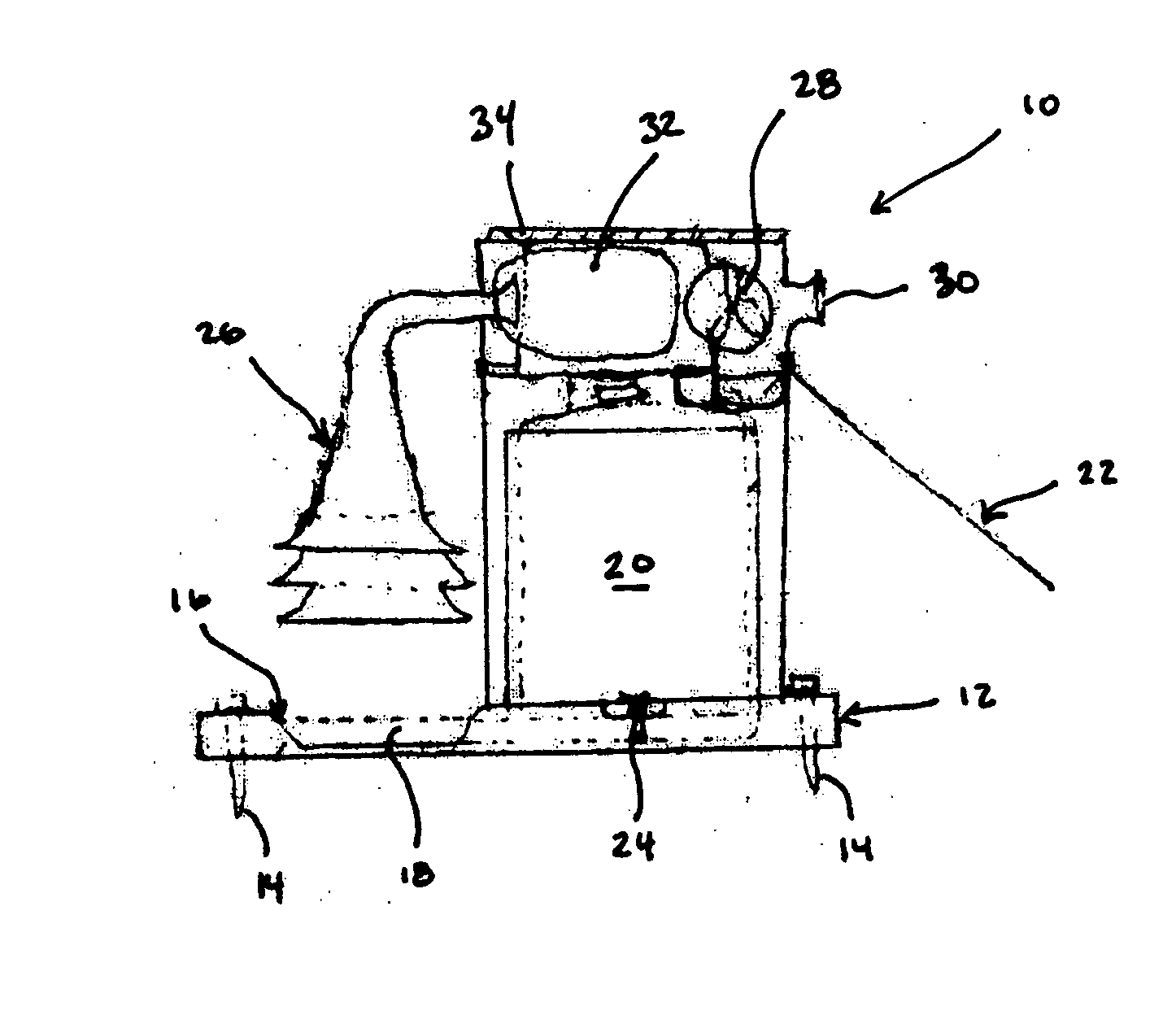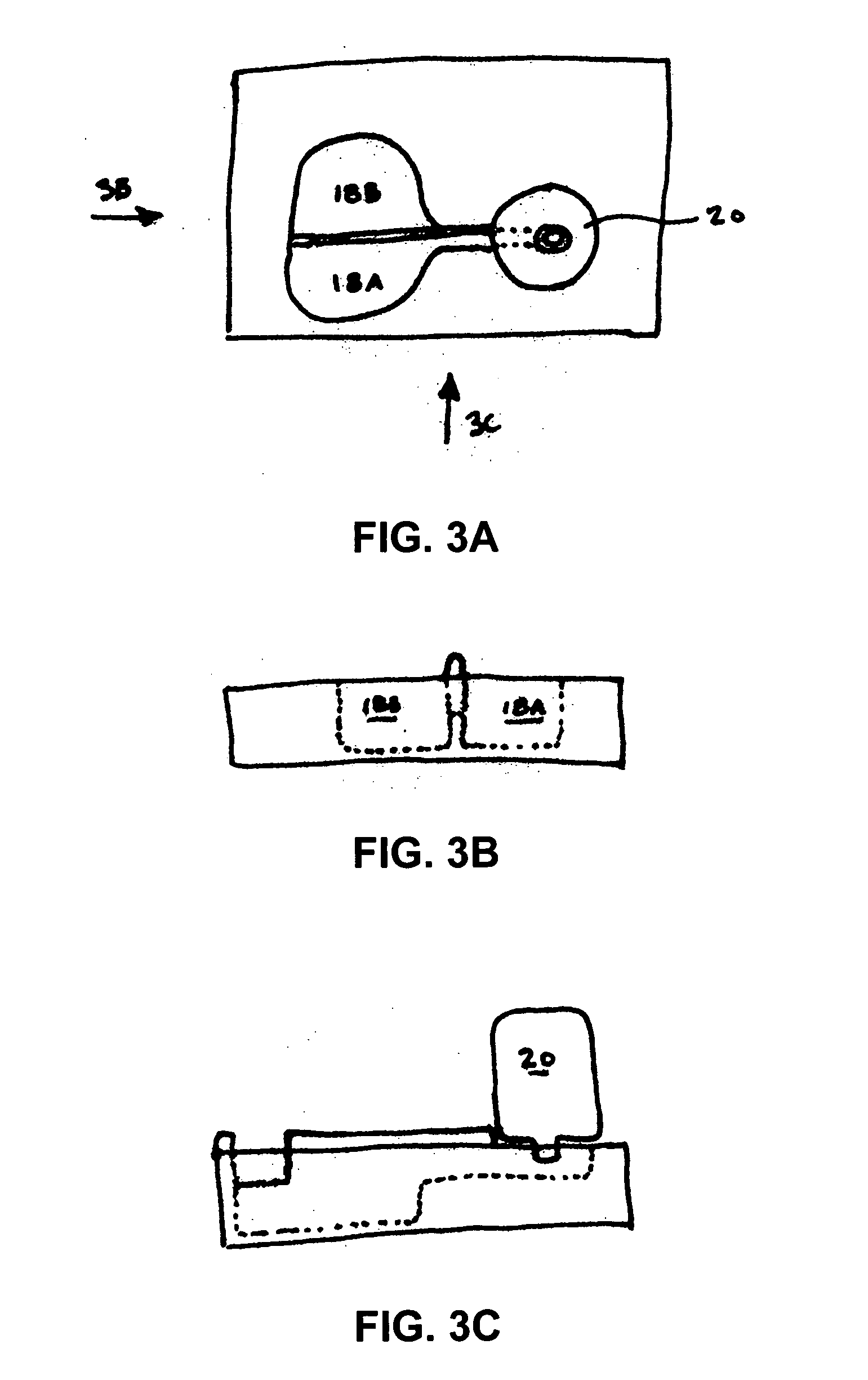Mosquito trapping device
a trapping device and mosquito technology, applied in the field of mosquito trapping devices, can solve the problems of short duration of treatment area, high cost of spraying, and harm to people and pets, and achieve the effects of reducing mosquito populations, reducing the number of eggs or larvae, and reducing the number of adult mosquitoes and insects
- Summary
- Abstract
- Description
- Claims
- Application Information
AI Technical Summary
Benefits of technology
Problems solved by technology
Method used
Image
Examples
Embodiment Construction
[0037] Referring now to the drawings, the present invention is directed toward devices and methods for reducing insects, particularly mosquitoes, by luring them into a trap with a device that mimics characteristics of a warm-blooded animal and also simulates an environment that may appear attractive to insects for breeding.
[0038]FIGS. 1 and 2 illustrate a non-limiting example of a device of the present invention. The device 10 comprises an anchor base 12 that is capable of supporting the various components of the system. If desired, anchors 14, such as nails, screws, or the like may be used to help secure the device to a base or foundation upon which the unit will be placed.
[0039] Turning to FIG. 1, the anchor base 12 may have a recess or tray 16 integrally formed therein for receiving a fluid of standing water 18 or the like for attracting mosquitoes looking to lay their eggs. If desired, a liner may be provided having an outer perimeter approximating the perimeter of the recess ...
PUM
 Login to View More
Login to View More Abstract
Description
Claims
Application Information
 Login to View More
Login to View More - R&D
- Intellectual Property
- Life Sciences
- Materials
- Tech Scout
- Unparalleled Data Quality
- Higher Quality Content
- 60% Fewer Hallucinations
Browse by: Latest US Patents, China's latest patents, Technical Efficacy Thesaurus, Application Domain, Technology Topic, Popular Technical Reports.
© 2025 PatSnap. All rights reserved.Legal|Privacy policy|Modern Slavery Act Transparency Statement|Sitemap|About US| Contact US: help@patsnap.com



